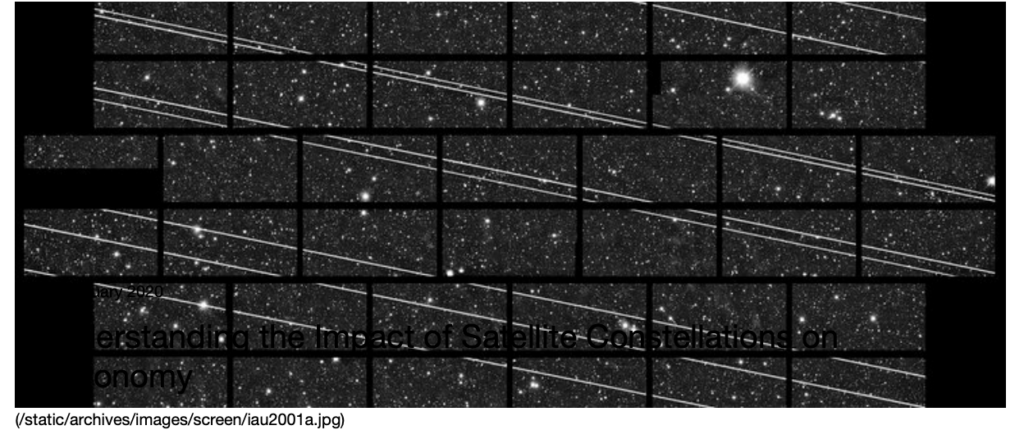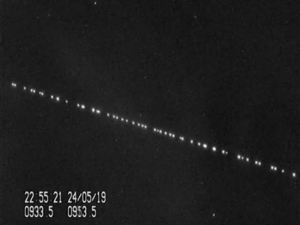Did you know that satellites contribute to light pollution?
In the last year, you may have looked up at night before and seen a train of moving lights spanning the width of the sky. These are SpaceX’s Starlink Satellites. The Starlink Satellites are a developing satellite network system with the goal of making the internet more accessible and affordable. It is difficult for internet service providers to reach rural areas and developing countries because of the cost of digging trenches and laying cable through miles of land that may not even belong to the internet user. Starlink will be able to beam internet signals directly to these unreachable locations and provide even faster service.

On April 18, the seventh batch of 60 satellites was launched into orbit, bringing the total number of satellites in the so-called “string of pearls” to 422. SpaceX eventually hopes to have as many as 12,000 satellites in this mega constellation. To put this in perspective, only about 2,000 artificial satellites currently orbit Earth, and only 9,000 have ever been launched. This enormous increase has many astronomers concerned about how these highly reflective objects will impact ground-based imaging.

Astronomers capture images of stars and galaxies with powerful telescopes and cameras. Imaging faint objects in the universe requires long exposure times. Very bright objects that move rapidly across the field of view can negatively affect large parts of the image. The images above are examples of what happens to a long-exposure image when Starlink Satellites pass through the frame while the image is being taken.
Fortunately, SpaceX has pledged to work on ways to make the satellites less bright, and more friendly to night sky observers. Currently, they are experimenting with coating the satellites black to reduce their brightness by an estimated 55% and testing a maneuver that will position the satellites at an angle that will reflect the least amount of sunlight. They are also making information about the satellites’ trajectories available on space-track.org and celestrak.com so that astronomers can time their observing and imaging without interference
